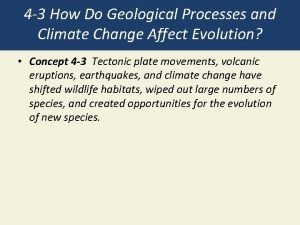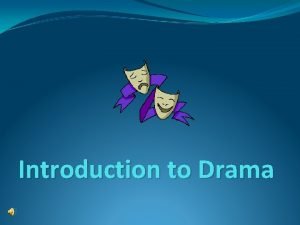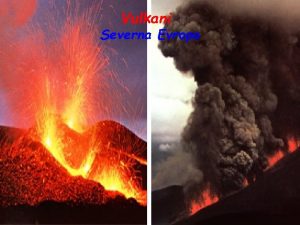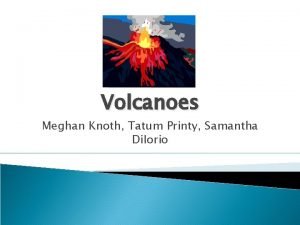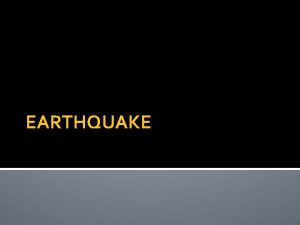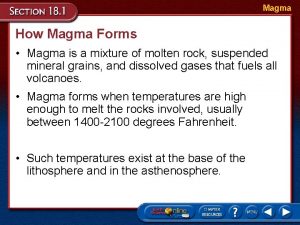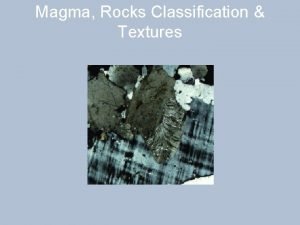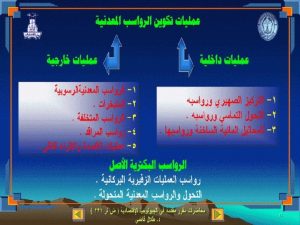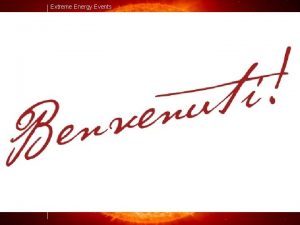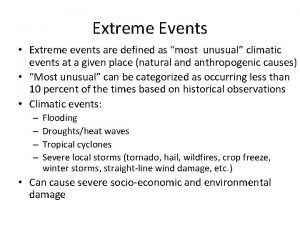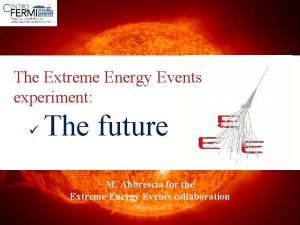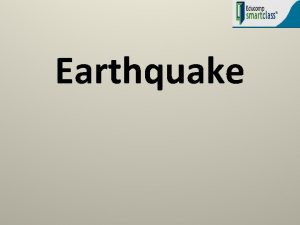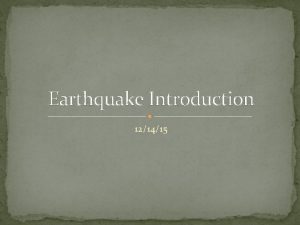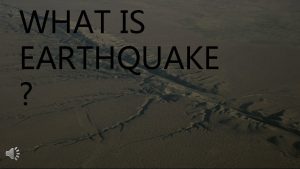Extreme Natural Events Earthquake processes Stage 1 Magma











- Slides: 11

Extreme Natural Events Earthquake processes.

Stage 1. Magma rises to the crust within the mantle. This creates friction and causes the plates to move. What 1. 2. 3. are the 3 main ways plates move

Stage 2 Pressure builds between plates and sometimes small earthquakes are felt. Sudden rupture of the plates along a fault line happens, and the earth shakes for 15 -40 seconds. The centre point of the rupture inside the earth is called the focus. Seismic waves radiate in all directions from the focus. The centre point on the earths surface above the focus is called the epicentre.

Stage 2: waves P waves (primary): first felt, does little damage. S waves (secondary): arrives shortly after P wave. I makes the ground shake vertically (up & down) and horizontally (side to side) like jelly. These can be very damaging. L waves (long wave): arrives last, like water rippling, it moves the ground sideways and can be very damaging.

Recap An earthquake focus is where earthquakes start. Energy is release when rocks suddenly snap The epicentre is on the surface, directly above the focus. A seismograph is an instrument that detects earthquake waves and records them on a graph called a seismograph.

Stage 3 The earthquake can damage land buildings, phone lines can be down and mobile networks overloaded. First response, save as many people as possible.

Stage 4: aftershocks Can be felt days, weeks, months afterwards, they can be large and destructive.

Recovery State of emergency may be declared by Civil Defence. Immediate concerns are the injured, food, shelter for survivors. Unsafe areas are evacuated, schools, halls and maraes are used as shelter centres.

Stage 6: rehabilitation The rebuilding of buildings, roads, services and economic facilities may take months and is very costly.

Sequence of events 1. 2. 3. 4. 5. 6. 7. Stress in tectonic plates Foreshocks may happen before the big one Earthquake happens Shaking is felt once waves surface Shaking lasts few seconds or several min. Aftershocks occur Process starts again

Earthquake processes Create a flow chart in your books, using these phrases put them in their correct order. Stress causes rupture at the plate boundaries Seismic waves radiate out from the earthquakes focus. Ongoing global plate movement The earthquake is felt by people as the seismic waves surfaces. Stress builds up in rocks at plate boundaries Movement along a fault line or the creation of a new fault line *(4) The point on the earths surface reached first by the seismic waves is the epicentre. *(6)
 Extreme wide angle shot
Extreme wide angle shot Concurrent in os
Concurrent in os Mutually exclusive vs non mutually exclusive
Mutually exclusive vs non mutually exclusive How do geological processes affect natural selection
How do geological processes affect natural selection Phase one denial
Phase one denial Downstage right definition
Downstage right definition Disadvantages of a arena stage
Disadvantages of a arena stage 2 stage tender
2 stage tender Stage right stage left
Stage right stage left Stage left vs stage right
Stage left vs stage right Izlita magma
Izlita magma Lava and magma difference
Lava and magma difference



